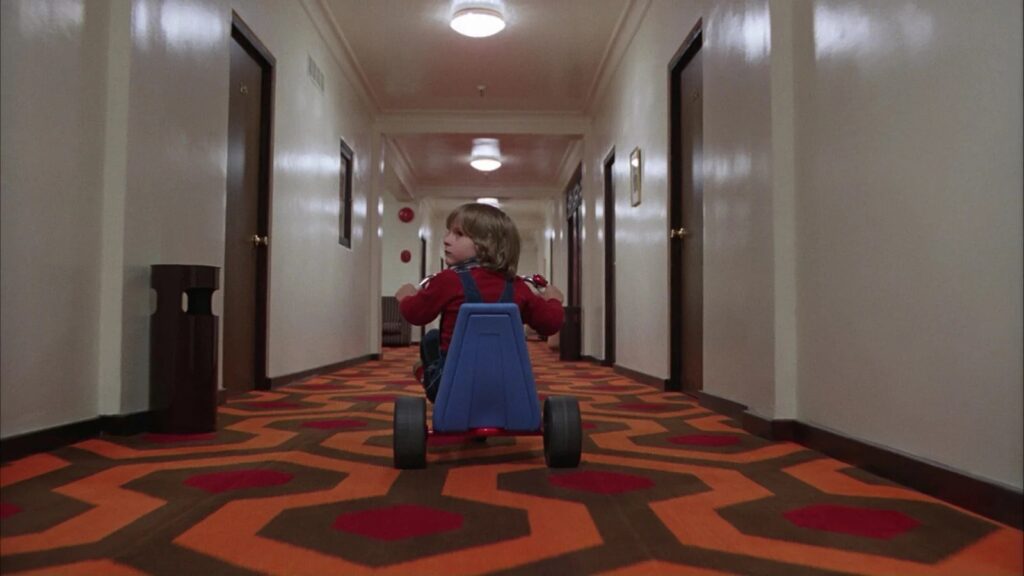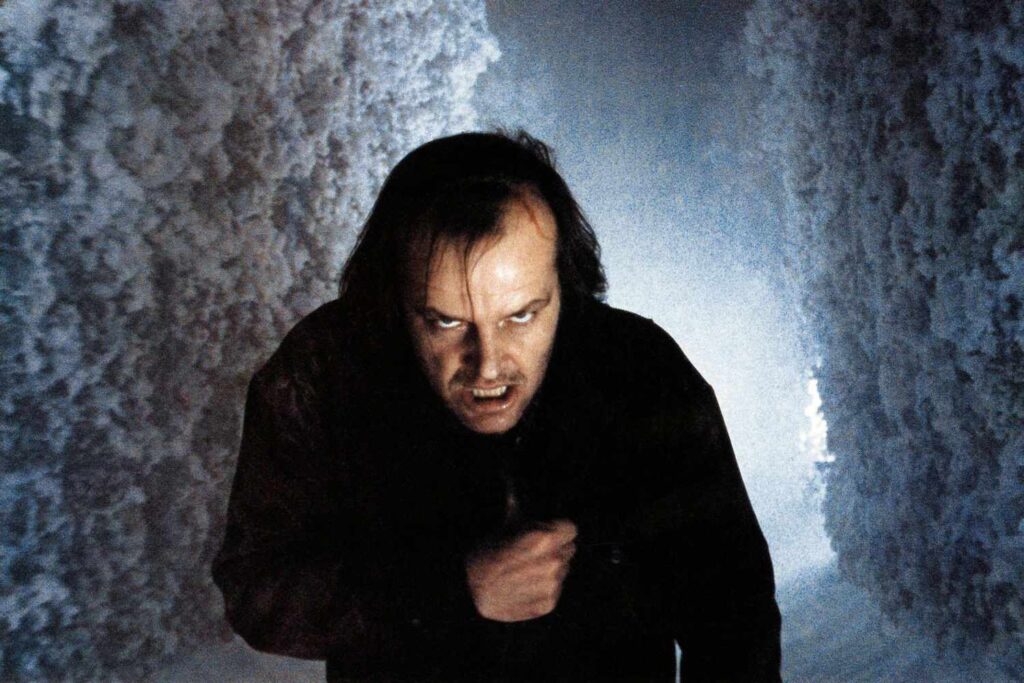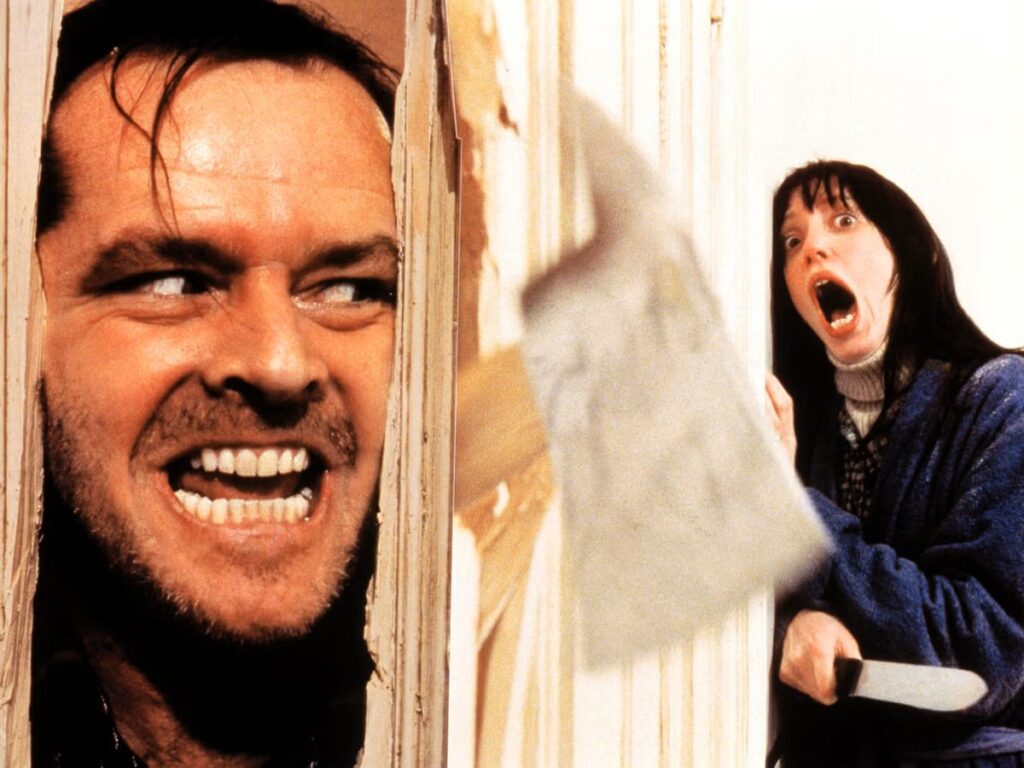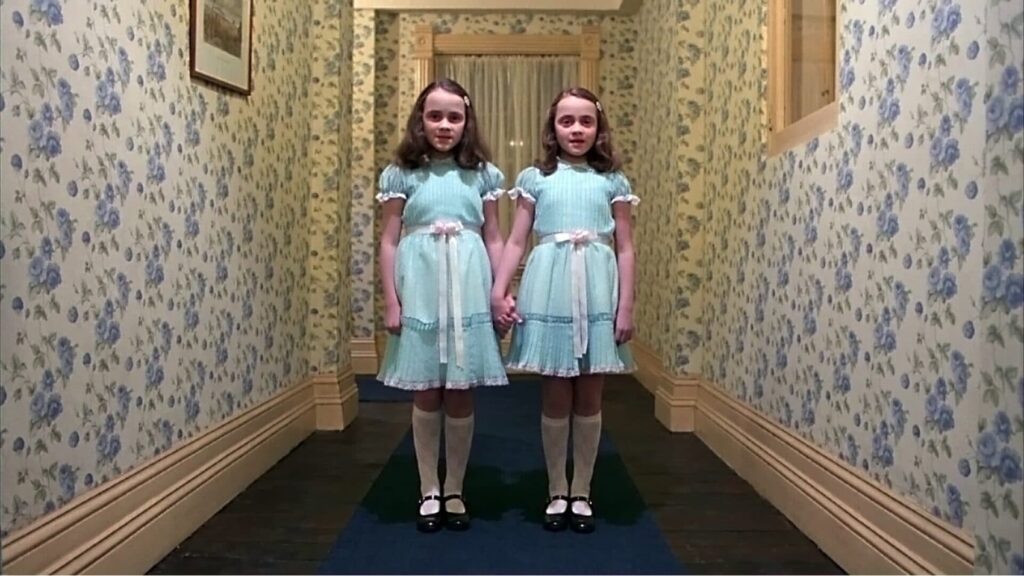Even after 40+ years, The Shining remains one of the most haunting, complex, and endlessly dissected horror films ever made. Stanley Kubrick didn’t just adapt Stephen King’s novel—he transformed it into something colder, stranger, and more psychologically unsettling.
From labyrinthine cinematography to psychological terror, let’s break down how Kubrick made horror history—and why The Shining still refuses to leave our minds.
Kubrick’s Obsession with Horror
By the late 1970s, Kubrick had already tackled war, sci-fi, political satire, and historical epics. But horror? That was uncharted territory.
According to legend, Kubrick spent days skimming horror novels in his office, tossing aside book after book, unimpressed—until he picked up The Shining. After a few pages, the room went silent. He had found his story.
But rather than treating The Shining as just another ghost story, Kubrick reshaped it into something far more ambiguous. Gone were the novel’s traditional hauntings and fiery climax—instead, the film became a cold, surreal nightmare, where horror seeps in through the walls.

Why Stephen King Hated the Film
Kubrick’s vision was far from King’s original intent, and the author never forgave him for it.
Jack Torrance in the novel – A good man struggling with alcoholism, slowly corrupted by supernatural forces.
Jack Torrance in the film – From the first frame, Nicholson looks like he’s already on the edge of madness. Kubrick wasn’t interested in Jack as a tragic figure—he was a ticking time bomb from the start.
King hated the casting of Nicholson, arguing that it ruined the slow descent into insanity. Kubrick didn’t help matters when he bluntly stated:
“Jack hates his son. Even without the ghosts.”
And then there’s Wendy.
Wendy in the novel – A strong-willed, resilient woman fighting to save her son.
Wendy in the film – A fragile, hysterical wreck, played by Shelley Duvall in a relentlessly tormented performance.
King called Kubrick’s Wendy “one of the most misogynistic characters in horror”, reducing her to a trembling victim rather than an equal protagonist.

What Kubrick Changed – And Why It Worked
Kubrick stripped away many of King’s key elements—including the haunted hotel’s fiery destruction—to create something more ambiguous and psychologically disturbing.
Are the ghosts real, or is Jack simply losing his mind?
Why does the Overlook Hotel seem alive, yet never fully explained?
How does Jack appear in that eerie 1921 photograph at the end?
Kubrick was obsessed with ambiguity, forcing the audience to question everything. The Overlook Hotel isn’t just haunted—it’s a living, breathing entity, a labyrinth of the subconscious where past and present blur together.
By the end, it’s not about a man possessed by ghosts—it’s about a man who was always doomed.
A Horror Film That Feels Like a Nightmare
Kubrick didn’t just want The Shining to be scary—he wanted it to feel like a nightmare you can’t wake up from.
The Overlook’s Impossible Architecture – Hallways lead nowhere, windows exist where they shouldn’t, and rooms shift sizes. The hotel defies logic, leaving the audience subconsciously unsettled.

The Soundtrack is Pure Dread – The film is filled with atonal, anxiety-inducing music by Ligeti, Penderecki, and Bartók—turning even silent moments into unbearable tension.
The Steadicam Creates an Inescapable Maze – The use of Steadicam (a revolutionary technique at the time) makes the viewer feel trapped inside the Overlook, following characters through its winding, endless corridors.
Every frame is carefully composed to feel “off”, yet so subtle that you don’t realize why it’s disturbing—just that it is.
The Shining’s Hidden Meanings (Or Just Fan Theories?)
Over the years, fans have come up with countless theories about The Shining’s deeper meaning. Some are plausible—others? Completely insane.
Kubrick Faked the Moon Landing – Conspiracy theorists point to Danny’s Apollo 11 sweater, believing the film is Kubrick’s confession that he staged the moon landing for NASA. (Yeah, sure.)
The Native American Genocide Theory – The Overlook was built on an Indigenous burial ground, and references to Native American imagery suggest the film is about America’s violent history.
The Minotaur & Labyrinth Theory – The Overlook’s maze-like design, Jack’s descent into madness, and Danny’s escape through the snowy hedge maze mirror the Greek myth of the Minotaur.
Kubrick, of course, never confirmed any of these theories. But one thing is clear—The Shining is more than just a ghost story.

How The Shining Changed Horror Forever
At the time of release, The Shining received mixed reviews—some critics found it cold, confusing, and lacking traditional horror scares.
Today? It’s recognized as one of the greatest horror films of all time.
It inspired generations of filmmakers – You can see The Shining’s DNA in everything from Hereditary to The Haunting of Hill House.
It made horror more psychological – No cheap jump scares—just pure, slow-burning dread.
Jack Nicholson’s performance is iconic – His manic, unhinged energy redefined the horror villain.
And then there’s Doctor Sleep (2019)—the sequel that tried to merge King’s book with Kubrick’s vision. While it gave us closure on Danny Torrance, it only further proved how singular, unsettling, and untouchable The Shining truly is.
Final Thoughts
The Shining isn’t just one of the greatest horror films ever made—it’s one of the most complex, haunting films in cinema history.
Kubrick took King’s novel and turned it into something colder, stranger, and infinitely more disturbing. Whether you see it as a ghost story, a psychological descent, or a metaphor for America’s past, one thing is certain—the Overlook Hotel never really lets you leave.
What’s your take on The Shining? Do you believe in the ghosts, or was Jack always doomed? Let’s hear your theories!
